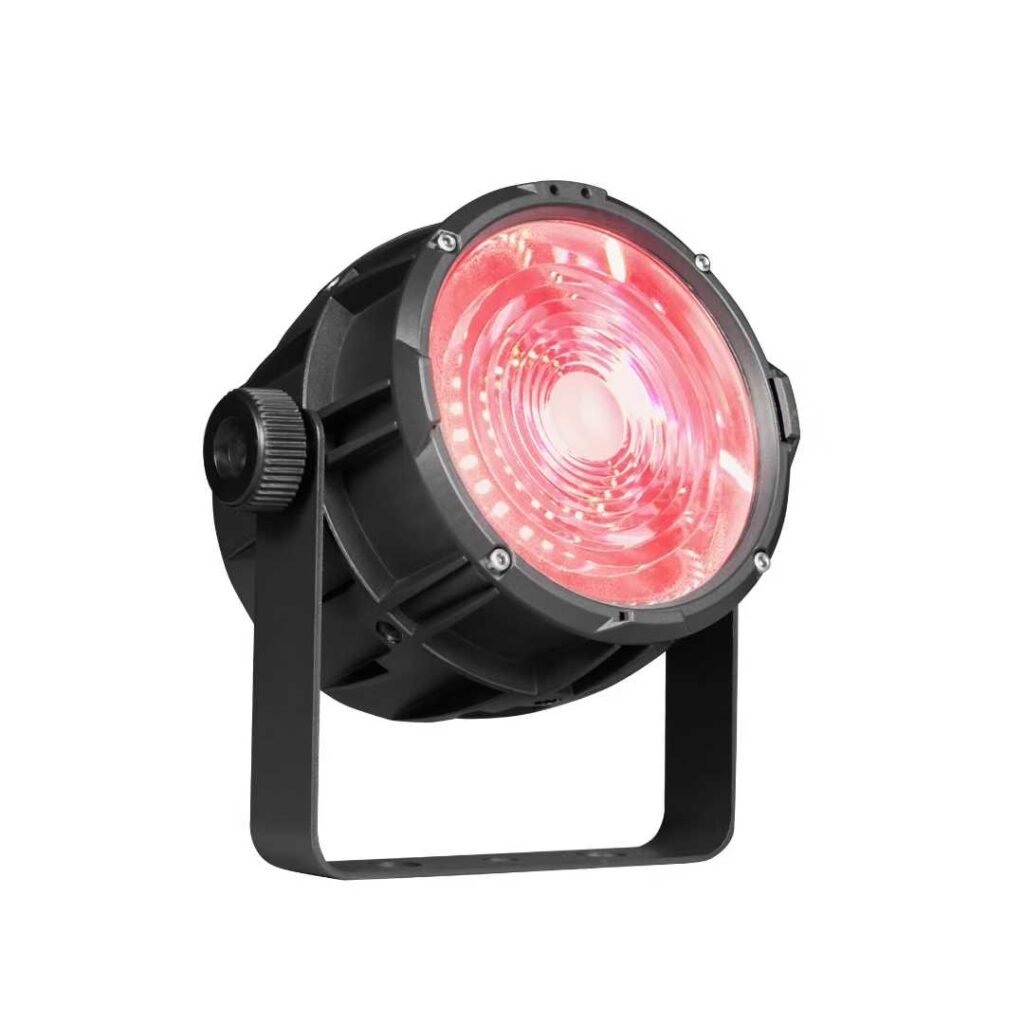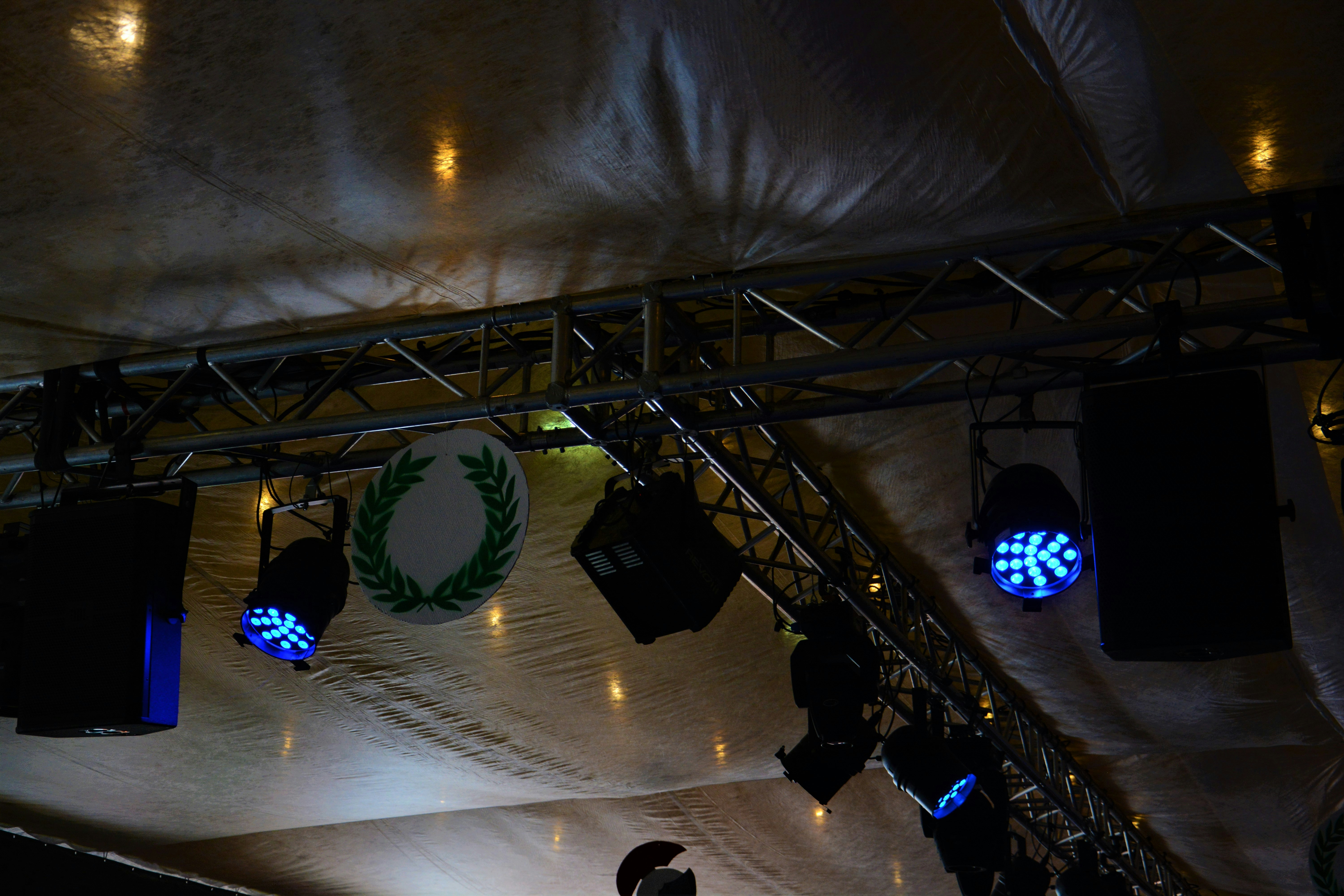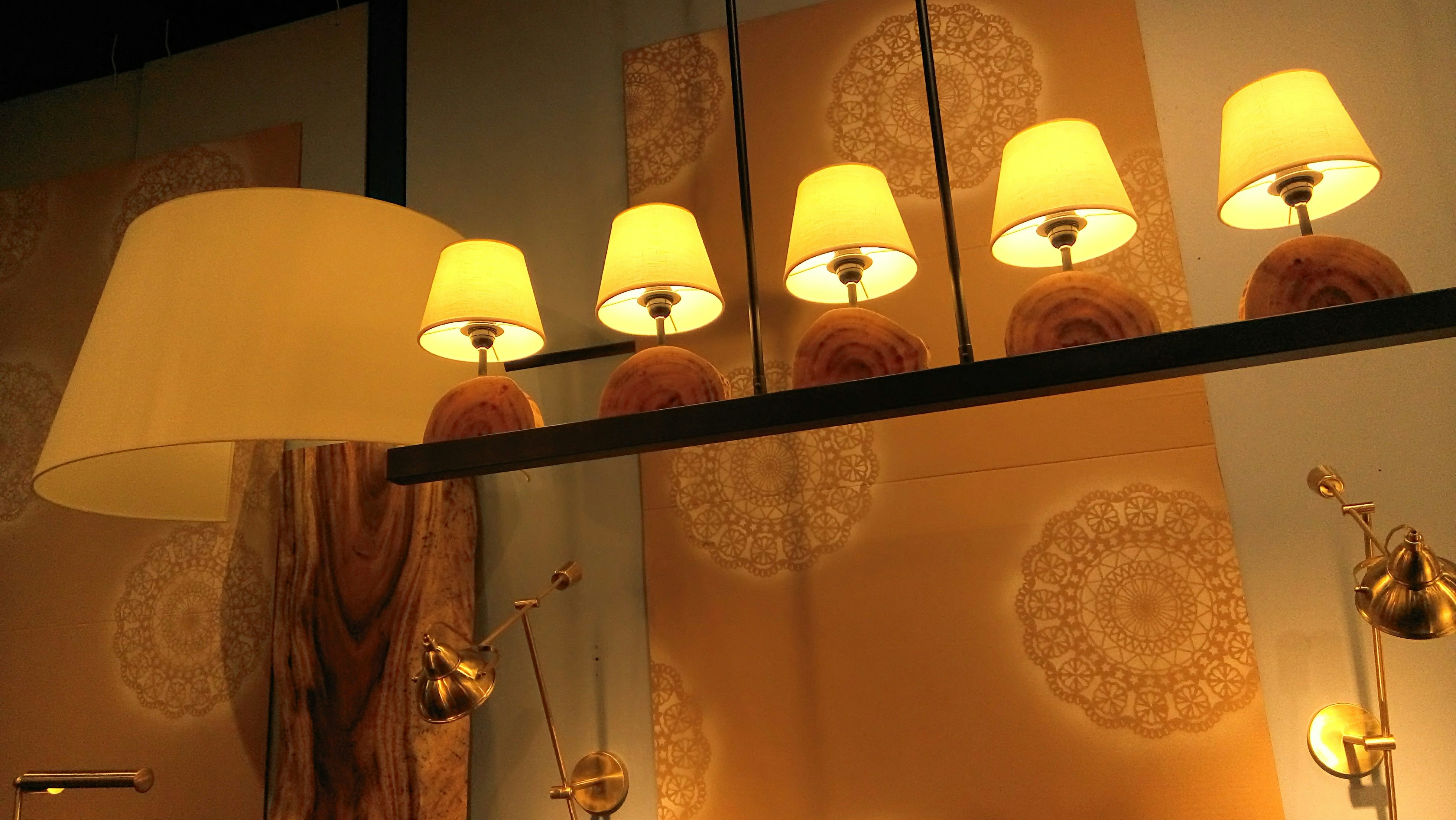Par cans feature a Parabolic Aluminised Reflector (PAR) and a metal “can” housing, providing a focused, soft beam of light. Modern LED par cans offer energy efficiency, long lifespans, and vibrant colors without gels. Key features include DMX control, built-in effects, variable beam angles, wireless operation, and compact, durable designs suitable for stages and events.
Key Features
Energy Efficiency & Long Lifespan:
LED par cans consume significantly less power than traditional halogen par cans and have a very long operational life, reducing costs and maintenance.
Vibrant, Customizable Colors:
They produce a wide spectrum of colors through internal mixing of RGB (or RGBW/RGBA) LEDs, eliminating the need for external gels.
DMX Control:
Most LED par cans are DMX-controllable, allowing users to program and synchronize lighting effects, dimming, and color changes remotely.
Built-in Effects:
Features like strobing, color mixing, and auto-run programs add versatility and visual impact for various applications.
Variable Beam Angles:
You can select from various beam angle options (e.g., 15°, 25°, 45°, 60°) to tailor the light spread for different uses.
Wireless Operation:
Some par cans feature wireless control via mobile apps or dedicated controllers, and some are battery-powered for greater placement flexibility.
Durable & Compact Design:
Their lightweight, robust construction (often aluminum) and compact size make them easy to transport and set up for touring and events.
Uniform Light Output:
LED technology ensures a consistent and even wash of light, a significant improvement over the unevenness of older traditional par cans.
IP-Rated Protection:
Many models include IP ratings (e.g., IP20, IP65) to protect against dust and moisture, making them suitable for both indoor and outdoor environments.
How They Work
Reflector & Housing:
The “PAR” (Parabolic Aluminised Reflector) refers to the lamp’s integrated reflector, which concentrates light into a beam. The “Can” is the housing that holds the light source.
LED Technology:
Traditional PAR cans used lamps, but modern versions utilize LED arrays. These LEDs are mixed internally to create various colors.
Control:
Users control the lights through external controllers (like DMX), built-in panels, or mobile apps, adjusting settings like brightness, color, and effects.




